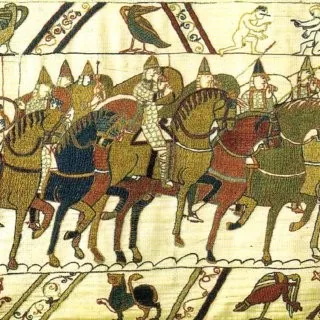Tomb Number 11: Uncovering the Mysteries of Culture and Society in the Age of the Hungarian Conquest
Archaeologists have discovered grave number 11 of the Karos-Eperjesszög cemetery from the time of the Hungarian conquest, shedding new light on burial practices and the social structure of the time. The Karos-Eperjesszög site, located in northeastern Hungary, is one of the most important archaeological sites associated with the period of the Hungarian conquest, dating back to the late 9th and early 10th centuries. This era marks the arrival and settlement of Hungarian tribes in the Carpathian Basin, a crucial moment in the formation of the Hungarian state.

Grave 11 is particularly noteworthy due to its good state of preservation and the wealth of artefacts found within. The grave contained the remains of an adult male, believed to be a warrior, based on the grave goods and manner of burial. Among the objects discovered were weapons such as a sword, a bow and arrows and a spear, typical of a warrior’s grave from this period. In addition, several items of personal adornment were found, including a decorated belt buckle, beads and a silver ornament, indicating the individual’s high status within society.

The position of the body and grave goods suggests a ritualistic aspect to the burial. The warrior was laid face up, with his head pointing westwards, a common practice in burials from the time of the Hungarian conquest, possibly signifying a journey to the afterlife. The presence of animal bones, probably horses, within the grave further supports this interpretation, as horses were highly valued and were often buried alongside their owners to accompany them into the afterlife.

The artefacts discovered in Grave 11 provide valuable information about the material culture of the period. The sword, for example, features intricate designs that reflect the craftsmanship and artistic influences of the period. The bow and arrows indicate the importance of archery in Hungarian warfare, a skill that played a crucial role in the successful conquest of the Carpathian Basin. The decorated belt buckle and other personal items suggest a combination of functional and decorative uses, highlighting the complex social hierarchies and cultural interactions of the period.

The discovery of Grave 11 also contributes to our understanding of the broader settlement patterns and social organisation of the Hungarian tribes. The Karos-Eperjesszög cemetery contains multiple graves, each providing unique data points that, when combined, create a complete picture of the community. The distribution of grave goods, the variation in burial practices and the spatial organisation of the cemetery offer clues about the social stratification, economic activities and cultural beliefs of the Hungarians during the Conquest period.
Overall, the excavation of Grave 11 is a significant addition to the archaeological record of the period of the Hungarian conquest. It not only enhances our knowledge of the burial customs and everyday life of the early Hungarians, but also contributes to the broader historical narrative of migration, settlement, and state formation in medieval Europe. As archaeologists continue to analyse the finds from Karos-Eperjesszög, it is expected that further discoveries will emerge that will provide even deeper insights into this formative period of Hungarian history.






